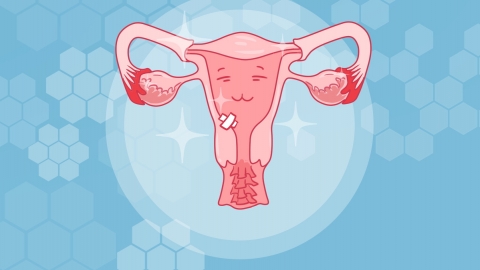What is the difference between an anteverted uterus and a retroverted uterus?
Under normal circumstances, an anteverted uterus and a retroverted uterus generally differ in anatomical position, pregnancy probability, menstrual experience, compression symptoms, and examination findings. A detailed analysis is as follows:

1. Anatomical Position: An anteverted uterus refers to the uterine body tilting forward toward the pubic symphysis, with the entire uterus inclined forward. A retroverted uterus refers to the uterine body leaning backward toward the rectum, with the uterus tilted backward. These differences arise from varying tensions exerted by the uterine ligaments and pelvic floor muscles, as well as influences from congenital development or acquired factors such as multiple pregnancies and pelvic adhesions.
2. Probability of Conception: In an anteverted uterus, the cervix is positioned lower, allowing semen to pool more easily at the cervical opening after sexual intercourse, facilitating easier entry of sperm into the uterine cavity to combine with an egg, thus theoretically resulting in a relatively higher probability of conception. In a mildly retroverted uterus, the impact on fertility is minimal. However, severe retroversion may cause the cervix to tilt upward, making it difficult for semen to reach the cervical opening and increasing the difficulty of conception.
3. Menstrual Experience: During menstruation, blood flows out more smoothly in an anteverted uterus, and most women experience mild discomfort. In a retroverted uterus, the backward tilt of the uterine body may require menstrual blood to change direction during expulsion, potentially causing poor drainage. Some women may experience symptoms such as a feeling of heaviness in the lower abdomen and pain in the lumbosacral region during menstruation, with the pain possibly being more pronounced compared to those with an anteverted uterus.
4. Compression Symptoms: An anteverted uterus typically does not cause compression of surrounding tissues. However, a severely retroverted uterus may compress the rectum, causing difficulty in defecation and a sensation of rectal pressure, especially with worsening symptoms during menstruation or after physical exertion. Some women may also experience symptoms of bladder compression, such as frequent urination.
5. Examination Findings: During gynecological or ultrasound examinations, an anteverted uterus is easier to visualize, and the examination procedure is relatively straightforward. A retroverted uterus, due to its posterior position, may sometimes require special techniques or changes in patient positioning to obtain a clear view. Particularly in cases of severe retroversion, the examination view may be obstructed, increasing the difficulty of diagnosis.
Daily activities such as appropriate exercise, including yoga and the knee-chest position, can help improve uterine positioning. Keeping warm during menstruation can also help alleviate discomfort symptoms.





